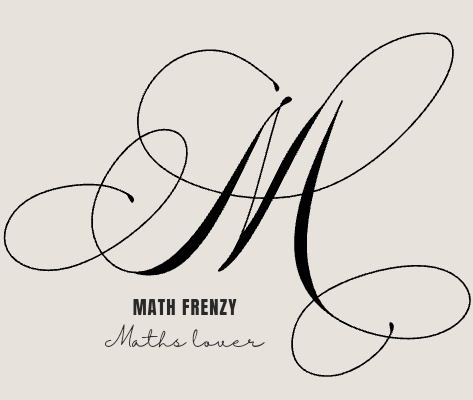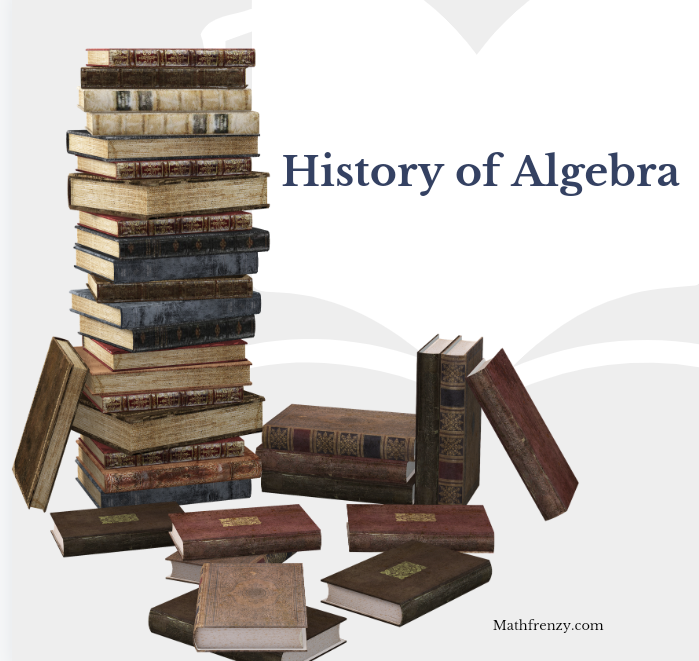Algebra is a main and ancient branch of mathematics. The history of algebra began in the 9th century. Algebra helps in solving mathematical equations.Famous mathematicians from different countries made significant contributions to this subject. Algebra was first known as Kuttaka, which was coined by the Hindu mathematician Brahmagupta in 628 AD. In the year 860 AD, Prathudak Swami named it Algebra.Modern algebra is the development of all his work which made algebra easier.

Ancient Beginnings
• Babylonian Algebra ( around 1900 – 1600 BCE):
The Babylonians developed algebraic operations to remove fraction and factos by adding and multiplying like interpolation to estimate intermediate values.The Babylonias knew about the Pythagorean theorem. The Babylonias were skilled in algebra, developed methos for solving equations based on pre-calculated.
• Egyptian Algebra (around 1800 BCE):
Ancient Egyptians, particularly during the Middle Kingdom period, used algebra in a more rudimentary form. They primarily worked with simple linear equations, often related to the distribution of goods and resources. The “Rhind Mathematical Papyrus,” one of the most famous Egyptian mathematical texts, contains algebraic problems.
• Greek Contributions(3rd century CE): The Greek mathematician Diophantus is often called the “father of algebra.” He wrote a series of books called Arithmetica, where he introduced algebraic notation and solved equations systematically. His work primarily focused on solving polynomial equations and investigating what are now known as equations with integer solutions.
• Euclid and Geometry (around 300 BCE): Though primarily known for his contributions to geometry, Euclid’s Elements included algebraic ideas expressed geometrically.
• Islamic Golden Age:Al-Khwarizmi (9th century CE): The word “algebra” is derived from the Arabic term “al-jabr,” meaning “reunion of broken parts,” from the title of Al-Khwarizmi’s book Al-Kitab al-Mukhtasar fi Hisab al-Jabr wal-Muqabala. Al-Khwarizmi, a Persian mathematician, is often regarded as the founder of algebra as a separate mathematical discipline. He introduced systematic methods for solving linear and quadratic equations and focused on operations involving variables. They expanded algebra to include cubic equations and further investigated solutions in geometric and arithmetic terms. This period saw the development of the fundamental ideas of algebraic manipulation.
• European Renaissance Algebra (14th – 17th century): During the European Renaissance, algebraic ideas were reintroduced and further expanded. Italian mathematicians like Girolamo Cardano and Niccolò Tartaglia made breakthroughs in solving cubic and quartic equations. Cardano’s Ars Magna (The Great Art) in 1545 is a significant milestone in the history of algebra.
• Symbolic Algebra (16th – 17th century): Algebra underwent a major transformation during this period with the introduction of symbolic notation. French mathematician François Viète is credited with laying the foundation for modern symbolic algebra. Later, René des Cartes contributed to the unification of algebra and geometry through the development of direct geometry.
• Modern Algebra:Development of Abstract Algebra (19th century): In the 19th century, algebra moved beyond solving equations to studying abstract structures such as groups, rings, and fields. Mathematicians like Évariste Galois, Niels Henrik Abel, and Carl Friedrich Gauss made significant contributions to the field of group theory and other areas of modern algebra. Galois, in particular, laid the groundwork for much of modern algebra with his work on polynomial equations and group theory.
• Contemporary Algebra: Today, algebra is divided into various branches such as linear algebra, abstract algebra, and commutative algebra. The study of algebraic structures, such as groups, rings, fields, and vector spaces, has profound involvement in mathematics and is used in areas like cryptography, coding theory, and theoretical physics.
Types of Algebra:
1.Elementary Algebra:
Definition: The branch of algebra in which the rules of arithmetic are generalized and symbols are used instead of numbers.
Applications: Solving equations, simplifying expressions, and understanding the relationship between variables.
2.Abstract Algebra:
Definition: A more advanced form of algebra that deals with algebraic structures such as groups, rings, and fields.
Applications: Cryptography, coding theory, advanced theoretical physics, and computer science.
3.Linear Algebra:
Definition: The branch of algebra that studies of vectors, vector spaces, and linear equations.
Applications: Used extensively in computer science, machine learning, engineering, and physics.
4.Boolean Algebra:
Definition: A sub-branch of algebra that deals with binary variables and logical operations.
Applications: Digital circuits, computer programming, and logic gates.
5.Commutative Algebra:
Definition: The branch of algebra which deals with the study of algebraic objects.
Applications: Cryptography, number theory, and algebraic geometry.
6.Homological Algebra:
Defination: The branch of algebra that studies homological functions and the complex algebraic structures they create.
Applications: Used in topological spaces and algebraic topology.
7.Universal Algebra:
Definition: A branch of algebra that studies algebraic structures in general settings.
Applications: Used to understand general concepts like groups, rings, fields, and other algebraic structures.




Looking for a fast and efficient way to resize ICO files? The ICO Resizer is the perfect tool for web developers and designers. It maintains high-quality output and supports multiple image formats. Try it now: ICO Resizer